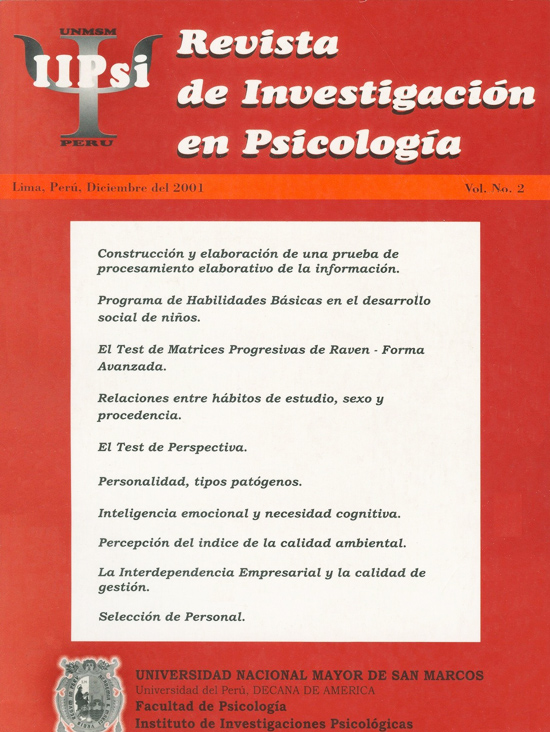Psychometric Study of the advanced form of the Raven’s Progressive Matrices Test in university students
DOI:
https://doi.org/10.15381/rinvp.v4i2.5026Keywords:
general intelligence, advanced progressive matrices, reliability, validity normsAbstract
It is analized the psychometric properties of Raven’s Advanced Progressive Matrices. The participants were 501 Freshmen students of 5 professional careers of the Universidad Nacional Mayor de San Marcos (U.N.M.S.M.), a public university located at Lima, Perú. The reliability analysis shows that the test is reliable. Also, the construct validity analysis meets the requirements of test making. The norms were elaborated considering the professional careers of the U.N.M.SM. students. It was find statistical differences on general intelligence scores, showing higher scores students of career “B” than students of “A “, “C “, “D” and “E” careers; also, students from career “C” showed higher scores than students from “A” and “E” career paths; finally, students from professional career“D” have had higher scores than students of “A“ and “E” careers. It was find no statistical differences between students of career “A” and “E “; neither between students of “C” and “G” career paths.Downloads
Published
Issue
Section
License
Copyright (c) 2001 Ana Delgado Vasquez, Luis M. Escurra Mayaute, Mario Bulnes Bedón, Rosario Quesada Murillo

This work is licensed under a Creative Commons Attribution-NonCommercial-ShareAlike 4.0 International License.
THE AUTHORS RETAIN THEIR RIGHTS:
a. The authors retain their trademark and patent rights, and also on any process or procedure described in the article.
b. The authors retain the right to share, copy, distribute, execute and publicly communicate the article published in the Journal of Research in Psychology (for example, place it in an institutional repository or publish it in a book), with acknowledgment of its initial publication in the Journal of Research in Psychology.
c. Authors retain the right to make a subsequent publication of their work, to use the article or any part of it (for example: a compilation of their work, lecture notes, thesis, or for a book), provided that they indicate the source. of publication (authors of the work, magazine, volume, number and date).






